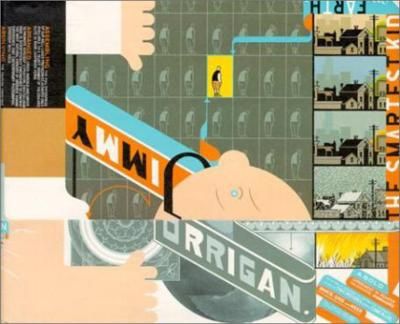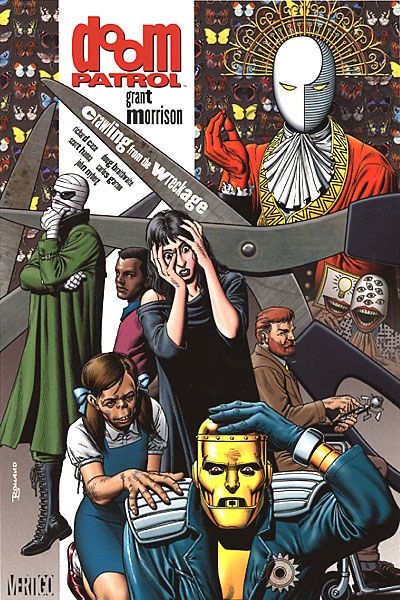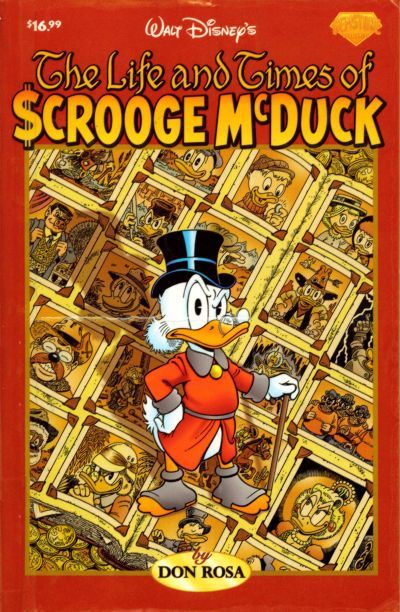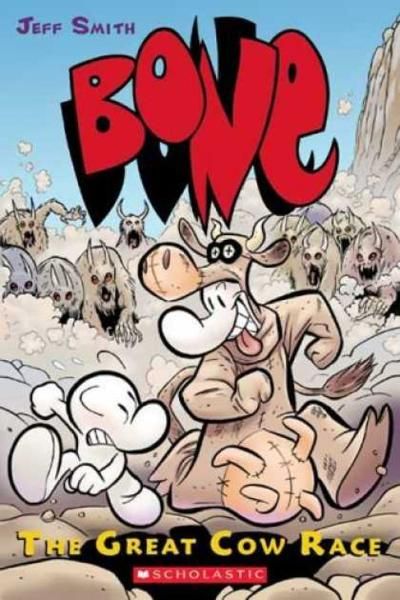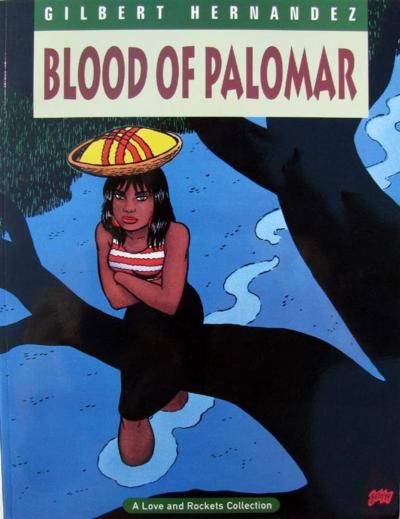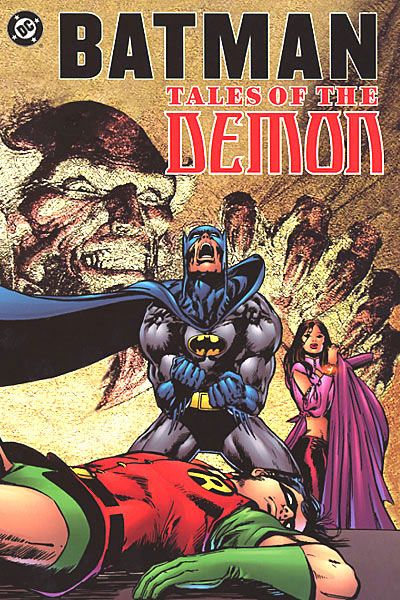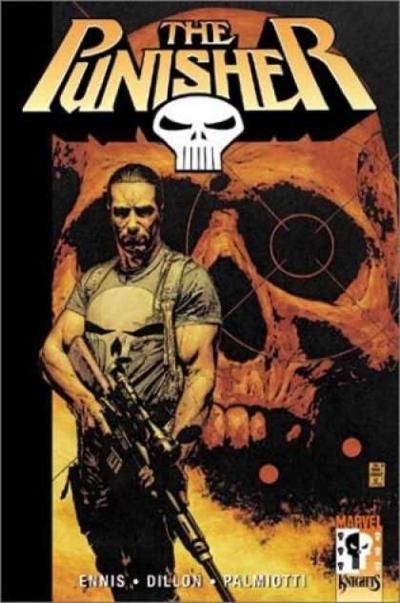The countdown begins....NOW!
First off, over 850 votes cast! That's amazing, people!! That's well over a hundred votes from the last time we did this (with the Top 100 Comic Book Runs)!! Thanks so much for the turnout! The more people who vote, the better the results are!!
Okay, as usual, the votes are more bundled together at the bottom of the list and things open up as we go along. The results will be five a day, except today, when you get TEN! Note, there may be some spoilers ahead! You are forewarned!
So, without further ado, here are your top 100 favorite comic book storylines!!
Here is the master list of all storylines featured so far.
100. "Who Killed Retro Girl?" by Brian Michael Bendis and Michael Avon Oeming (Powers #1-6) - 98 points
The opening arc of Bendis and Oeming's crime comic about police officers in a world of superheroes opened up with a bang - the death of popular superheroine Retro Girl.
Retro Girl was a compatriot of Christian Walker, the main protagonist of Powers, who is a detective who once was a superhero.
In this volume, he has to juggle solving the murder of his close friend along with taking care of a little girl whose mother has died, not to mention breaking in a new partner, Deena Pilgrim.
Bendis' sharp dialogue works extremely well in the world of police detectives, and the look at the grittier side of the superhero world was quite fresh at the time. Oeming's art was great, as always.
The ending of the arc, in particular, is quite a blast. This opening storyline was a hard one to follow for Powers, but Bendis and Oeming continually managed to meet the standard they set for themselves with "Who Killed Retro Girl?"
97 (tie). "Crawling From the Wreckage" by Grant Morrison, Richard Case, Carlos Garzon and Scott Hanna (Doom Patrol #19-22) - 100 points (2 first place votes)
Next we have another opening arc, this time the first storyline in Grant Morrison's acclaimed run on Doom Patrol.
What's really amazing, in retrospective, about Morrison's first arc is how slowly he teased out the truly bizarre stuff that he would later do with the run. If you were a regular reader of the series, Morrison's first issue would not have been all THAT different from the previous stories by Paul Kupperberg, but by the end of that first arc, the book was in an entirely different realm of comics.
The basic set-up of the story is that the Doom Patrol needs to regroup (after most of its members were killed or put into character limbo in the issues leading up to Morrison's run in a very cool piece of assistance by outgoing writer Kupperberg), and Robotman Cliff Steele is the only member of the group still standing. In the first issue, Morrison introduces Crazy Jane (who has multiple personalities, each one having their own superpower) and we are re-introduced to a throwaway character from Kupperberg's run, Dorothy - an ape-faced girl who can alter reality. Negative Man and Negative Woman return, in a fashion, as Rebis, a hermaphrodite with similar powers.
The bad guys are inter-dimensional "Scissormen" - and things get trippier from there.
It's a remarkable introduction into the mind of Morrison.
97 (tie). "The Life and Times of Scrooge McDuck" by Don Rosa (Uncle Scrooge #285-296) - 100 points (3 first place votes)
The Life and Times of Scrooge McDuck is the type of comic book project that really should not work as well as it does. Over his decades of writing Uncle Scrooge, Carl Barks threw in little details of Scrooge's past here and there. Occasionally, the details even conflict (although that might not be Barks contradicting himself, it could have been another Scrooge writer contradicting a Barks detail). So writer/artist Don Rosa decided to use all those little details about Scrooge and then fashion a 12-part detailed life of Scrooge from boyhood until his first appearance as regular comic book character.
That might sound like something better suited for an essay or a spreadsheet, yet Rosa's brilliance as a storyteller make the whole endeavor an utter marvel.
Scrooge's adventures are all pretty much "done in one"s, yet they continue an overarching character development that is quite impressive. Also impressive is all the actual historical details that Rosa peppers in with Scrooge's travels. It's strong historical fiction.
And Rosa's art is a detailed delight.
It's no surprise that this story won an Eisner Award!
97 (tie). "Jimmy Corrigan, Smartest Boy on Earth" by Chris Ware (Acme Novelty Library #5, 6, 8, 9 and 11-14) - 100 points (5 first place votes)
Chris Ware's Jimmy Corrigan, Smartest Boy on Earth is an extremely layered tale of a depressed man (Corrigan) meeting his father late in his life. This story is intermixed with the story of Corrigan's grandfather (also Jimmy Corrigan) as a boy and HIS relationship with HIS father. All throughout, we also have the fantastical story of Jimmy Corrigan, Smartest Boy on Earth - showing Corrigan as a child. However, we also see Corrigan as a depressed child dealing with his parents divorce, and so we know that the "Smartest Boy" vignettes are just dreams of a sad man who has great trouble dealing with the world as it is.
The most brilliant aspect of Ware's book, as is usually the case with Ware's work, is his amazing design sense - the story of Jimmy Corrigan is really a marvel of design, there are many pages that do not even have text, because Ware designs the pages so well that you don't NEED text - he's so detailed and thorough that you feel like you're inundated with details about these characters without reading a single word.
Is the story depressing?
Yes, in the sense that the actual plot of the book is depressing, but it is done so beautifully that I can't help but be happy when I read it, no matter how dreary the plot is.
It's a tour de force performance by one of comics' greatest creators.
This story won numerous awards and accolades when it was collected into book form, including the Guardian First Book Award, the first comic book to ever be so honored.
It's a deserved honor.
96. "Love and Death" by Alan Moore, Stephen Bissette and John Totleben (Thanks to Stephen Bissette for noting that Rick Veitch also should be credited in this arc - my apologies, Rick) (Saga of the Swamp Thing 28-34 & Annual #2) - 101 points (2 first place votes)
Love and Death is the storyline responsible for Swamp Thing officially moving from a regular Comics Code Approved comic to a "Mature Readers" comic, only in the case of Swamp Thing, it was termed "Sophisticated Suspense" to deter youngsters from reading it.
Alan Moore had already made quite a name for himself on just the first eight issues of his run, but this storyline, which involved Abby Cable's evil uncle Anton Arcane taking over the body of her husband before killing her (and officially ending her husband's life) - well, it took the book in a whole different direction of darkness.
After Swamp Thing defeated Anton (killing him once again), he decides to go to Hell to rescue Abby's soul.
Nowadays, with the proliferation of pretty much every DC Universe character, it is hard to imagine how fresh someone like Moore using Deadman, The Demon and the Phantom Stranger was, but it was - and that's on top of the fact that he used them all extremely well. Moore's use of the Demon (who he had used a couple of issues earlier) was extremely influential on later writers of the character, and Deadman, heck, he had not even been USED in YEARS before Moore featured him here.
The storyline concludes with Abby's return and the famous "sex issue," where Abby and Swamp Thing make love.
Stephen Bissette and John Totleben are almost shocking at the level of excellence they reach on this storyline - from the darkness of the early story (Bissette's zombies are gruesome) to the tender euphoria of their love-making (like a kaleidoscope has exploded), they master it all.
94 (tie). "The Great Cow Race" by Jeff Smith (Bone #7-11) - 102 points (1 first place vote)
If you were going to pick one Bone storyline to represent the series, The Great Cow Race is a great one to pick, which is helpful, because it is the only Bone storyline on the list!
This story, which is the second story arc in Jeff Smith's acclaimed series, gives you a quick and telling introduction to the world of the Bones.
Our hero, Fone Bone, is his traditional heroic and love-sick self. The greedy Phoney Bone has cajoled the dim-witted Smiley Bone into another one of Phoney's hare-brained ideas - disguise themselves as cows and win the Great Cow Race against Gran'ma Ben!
The Great Cow Race itself shows readers the wacky nature of the valley folk, and the irascible nature of Gran'ma Ben (the lady races cows!!!).
At the same time, there is a dark side, too, and we see that through the rat creatures and through some new details about Thorn, the love of Fone Bone's life.
This is a fun, engaging story arc with great Smith art - a real winner.
94 (tie). "Blood of Palomar" by Gilbert Hernandez (Love and Rockets #21-26) - 102 points (3 first place votes)
Love and Rockets primarily showcases the work of brothers Jaime and Gilbert Hernandez.
Gilbert's most significant work was examining the lives of the inhabitants of Palomar, a fictional South American country where crazy things happen.
This storyline, originally published under the name "Human Diastrophism," follows the people of Palomar as a serial killer strikes the town.
While the serial killer aspect of the story might be the most notable aspect from the outside of the story, within the comic it exists more as a plot device to push the character development that the Hernandez brothers are so well known for.
There IS a mystery, but it is solved (for the reader) fairly early - instead, the main part of the story is seeing all the many (MANY) characters interact with each other as they all grow, some for the better and some for...well, I wouldn't say "for the better."
Gilbert's most notable Palomar character, Luba, has an important storyline as she begins to re-think her life as she grows older, and decides that she wants to change the way she relates to her children as they grow older and older.
This is such a detailed, multi-layered storyline - it's very dense, but accessible, and Hernandez' art should get a lot of that credit, as he knows how to simply draw the reader in with seemingly simplistic designs.
Things get even MORE complicated in later Palomar stories, so if you wish to catch on before things get even denser, this is the story to seek out!
93. "The Slavers" by Garth Ennis, Leandro Fernandez and Scott Koblish (Punisher MAX #25-30) - 103 points (5 first place votes)
Honestly, someone else will have to explain why The Slavers, of all the Punisher MAX story arcs, is the only one to make the list.
It is not that the Slavers is not a strong storyline, it is. It is excellent.
The Punisher stumbles upon a slave ring, and as Ennis did throughout his MAX series, since Frank Castle is almost devoid of characterization (he's basically a killing machine), Ennis goes into DEEP characterization on everyone else in the book, including the slaves, the slave ring leader and the son of the slave ring leader (imagine the kind of daddy issues you would have if you ran a slave ring with your dad), plus some cops who look to use the Punisher for PR purposes.
Ennis weaves all of these plots together and does not flinch on showing us the extreme violence and depravity that goes on with forced prostitution, making it so much more cathartic when the Punisher klls all the bad guys, and in some cases, in increasingly poetic manners.
So yeah, it's a great storyline, but pretty much EVERY Punisher MAX storyline was great, so I can't tell you why this one was chosen over all the others. Perhaps someone in the comments section can explain why this one is the best of all the MAX stories!
91 (tie). "First Tale of the Demon" by Denny O'Neil, Neal Adams, Bob Brown, Irv Novick and Dick Giordano (Batman #232, 235, 240, 242-244 and Detective Comics #411) - 105 points (2 first place votes)
The storyline does not really HAVE a name, although I guess you might call it "Daughter of the Demon," but since it is collected in Tales of the Demon with another Ra's al Ghul story, I figure "The First Tale" is an appropriate enough name!
It begins in Detective Comics with a Bob Brown penciled issue, then the story continues to Batman, where Irv Novick and Neal Adams draw three issues apiece (although Adams draws more total story pages, as two of Adams' issues are full-length stories while none of Novick's are).
As for the rest of the story, why waste time when I can just re-post what I wrote about this story when it made the Top 100 Battles list?
An interesting aspect of the first stories involving Ra's Al Ghul by Denny O'Neil and friends is the fact that the Batman within these stories is barely recognizable to the super-competent Batman of today. The Batman of the first Ra's story really needs the help of other practically ordinary people to help bring down Ra's.
Ra's and Talia had been around for a little while before the famous first duel between Batman and Ra's took place.
Batman fakes Bruce Wayne's death and takes on the identity of Matches Malone for the first time (Malone is introduced and is killed in these issues, leaving the identity available for Batman to use). He teams up with a scientist who had worked with Ra's (not of his own volition) and they race to stop Ra's and Talia from unleashing a deadly plague. Through the story, Batman gets aid from some unlikely sources, like a famous skier!!
Ultimately, Batman tracks them down only to discover Ra's dead. He takes Talia into custody but is then confronted by Ra's - this is the first time we see the use of the Lazarus Pit. Batman is quickly subdued and Ra's and his daughter take off.
This is probably the first "wow, Batman is tough" scene, as Batman manages to catch up with them and confront them again in the desert. Ra's is suitably impressed. They proceed to have a sword duel in the desert that Batman perhaps would have won, but a scorpion stings Batman.
As he lies dying, Talia's love for Batman outweighs her daughterly fealty, and she gives Batman an antidote. He then captures Ra's and takes him into custody, winning their first battle, but not in the ultra-capable way we're used to Batman winning battles nowadays.
91 (tie). "Welcome Back, Frank" by Garth Ennis and Steve Dillon (Punisher: Marvel Knights #1-12) - 105 points (2 first place votes)
When Joe Quesada's Event Comics took over production on a handful of Marvel heroes, it was generally a rousing success, especially their revitalization of Daredevil.
One concept that did not work as well, though, was the Punisher becoming an avenging angel for Heaven.
So when Garth Ennis and Steve Dillon began their follow-up maxi-series and it was called "Welcome Back, Frank," they really mean welcome back!!
In the first page, Ennis does away with the angel plot and it is on to good ol' fashion mobster slaughter!
The big difference between this and older Punisher stories is that Ennis decided to take an approach similar to his Hitman series, where he would mix in a good deal of humor into the stories, as well as a colorful cast of good guys AND bad guys.
The result was a very fun book (with striking Dillon artwork) that was also quite bloody.
And most importantly, the book made the Punisher a viable property again, and it is likely no coincidence that a new Punisher movie was green-lit soon after Ennis turned the character around.
Ennis would follow this up with a Marvel Knights ongoing, but really, the joke had diminishing returns as time went on - this first maxi-series, though, was extremely tight and fresh (Ennis later changed things up by taking Punisher to Marvel MAX, where Ennis dropped the humor and kept the darkness).
And for those of you who know about Garth Ennis' general distaste for superheroes, well, you'll like to see how he handles Daredevil's guest appearance early on. Some twisted stuff.

